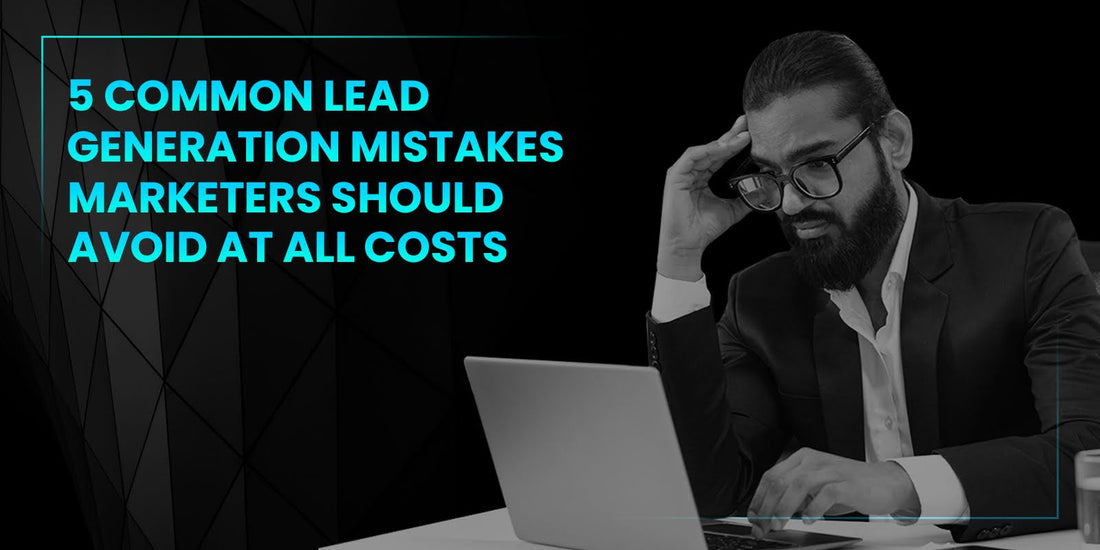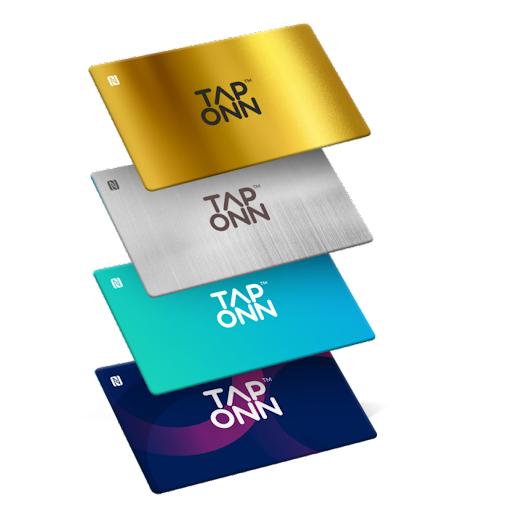
5 Common Lead Generation Mistakes Marketers Should Avoid at All Costs
You must be aware that lead generation is the lifeblood of any successful marketing strategy. In case you don’t know what lead generation is, it is a process of attracting and converting prospects into potential customers. However, despite its importance, many marketers fall victim to common mistakes that can derail their efforts and hinder their success.
What is lead generation?
In this blog post, we will delve into five of the most prevalent lead generation mistakes that you should steer clear of at all costs. By identifying and avoiding these mistakes, you can optimize your lead generation efforts and get better results for your business.
5 Mistakes That You Should Avoid
Here are few lead generation mistakes that you should avoid.
Mistake 1: Neglecting UTM Tracking Links
Ever poured resources into campaigns without truly understanding where your leads originate?
You're not alone. Many marketers skip UTM parameters, essential tracking codes revealing campaign performance details. This is like driving blindfolded - you get somewhere, but the journey's a mess.
Without UTM parameters appended to your website links in various social media campaigns (social media posts, email newsletters, etc.), you have no way to track where your leads originate. You might be pouring resources into different channels, but you won't know which ones are actually bringing in valuable leads.
This lack of clarity leads to wasted marketing budget and effort. You might be investing heavily in campaigns that deliver nothing, while neglecting channels with hidden potential. If you don't know where your leads come from, you can't optimize your campaigns effectively. You're essentially shooting in the dark, hoping to hit the target occasionally.
Track your UTM links
Mistake 2: Underutilizing Facebook Pixels
Facebook advertising offers incredible targeting capabilities, but its power is amplified by the Facebook pixel. This code tracks user behavior across your website, revealing valuable conversion insights. Skipping the pixel is like having a treasure map with half the clues missing.
Power of the Pixel
If you still doesn’t understand power of pixel, here are few of its importance:
Tracks website visitor actions
Did someone add an item to their cart? View a specific product page? The pixel captures all these actions.
Triggers custom audiences
Based on their behaviors, you can create tailored ad campaigns for different segments of website visitors. Imagine showing special offers to people who browsed a specific product, increasing their purchase chance.
Optimizes ad spend
By seeing which actions lead to conversions, you can focus your budget on the most effective ads, maximizing your ROI.
Retargeting website visitors
Even if someone doesn't convert immediately, the pixel remembers them. You can then show them targeted ads on other websites and social media platforms, staying top-of-mind.
What is the problem?
Without the pixel, you're flying blind. You can't understand how your Facebook ads are actually performing, where the leads are coming from, and whether you're reaching the right audience. This results in wasted ad spend, missed opportunities, and a constant guessing game.
Mistake 3: Undefined Ideal Customer Profile (ICP)
‘Everyone is a potential customer,’ might sound optimistic, but it's a recipe for disaster. Without a defined Ideal Customer Profile (ICP), your marketing becomes a scattershot, wasting resources on unqualified leads.
Why is focusing on ICP crucial?
Here are few of the reasons why ICP is important:
Efficiency
Imagine spending hours crafting marketing campaigns, writing content, and designing offers that appeal to everyone. Most of it will miss the mark, landing with people who have no interest in your product or service. Defining your ICP allows you to laser-focus your efforts, saving time, money, and resources.
Relevance
Generic messaging rarely resonates. By understanding your ICP's pain points, needs, and motivations, you can craft targeted messaging and offers that speak directly to them. This increases engagement, builds trust, and ultimately leads to more conversions.
Conversion Rates
When you target everyone, your website, landing pages, and content become a buffet for all tastes. But most people won't find what they're looking for, leading to high bounce rates and low conversion rates. Tailoring your offerings to your ICP creates a targeted experience that guides them towards conversion.
Cost Effectiveness
Paid advertising platforms like Google Ads and Facebook Ads allow you to target specific demographics and interests. But without an ICP, you're essentially playing a guessing game, potentially wasting ad spend on irrelevant audiences. Defining your ICP allows you to target your ads effectively, maximizing your return on investment.
How to define your ICP?
Start by gathering data and insights about your existing customers. Analyze demographics, firmographics (for B2B businesses), purchase history, and online behavior. Conduct surveys and interview existing clients to understand their motivations and pain points. Use industry reports and research to understand your target market as a whole.
By continuously refining your ICP based on data and feedback, you ensure your marketing efforts are laser-focused and deliver high returns. Remember, it's not about casting the widest net; it's about finding the right fish in the right pond.
Mistake 4: Relying Solely on Offline Lead Generation Methods
In today's digital age, sticking to traditional methods like cold calling can be incredibly inefficient and ineffective. Imagine investing precious time and effort in dialing numbers, facing busy signals, and leaving voicemails that may never be heard. Even when you connect, you're competing with the countless messages and distractions bombarding recipients online. It's simply too hard to grab attention and leave a lasting impression through cold calling alone.
Why does it hurt your ROI?
Here are few reasons why you should not rely on offline lead generation methods:
Low Success Rates
Cold calling is notorious for its low conversion rates. Studies show that the average success rate for B2B cold calls is a meager 2-3%. That means for every 100 calls you make, you might only generate 2-3 qualified leads.
Time & Effort Wasted
The process of finding contact information, dialing numbers, leaving voicemails, and dealing with rejections is incredibly time-consuming. This valuable time could be better spent on activities with higher ROI potential.
Negative Perceptions
Cold calling can often be perceived as intrusive and disruptive, potentially damaging your brand image and creating negative associations with your product or service.
Instead of this, you can attend various events in your industry and can connect with leads in real time. The chances of gaining trust and credibility of leads through in-person interactions is quite high as compared to what is through cold calls. TapOnn provides you NFC enabled smart business cards through which you can connect with others just on a single tap. Leveraging the opportunity, you can build reliable leads and instant connections in the long run.

Network with TapOnn’s business card
Mistake 5: Lack of Memorability and Follow-Up
In the digital age, we encounter thousands of things online daily. While we may be initially intrigued by someone's content or message, the sheer volume of information overload quickly buries their details.
Imagine the effort you put into networking at an event, only to have your name and business disappear into the digital abyss shortly after. This is the harsh reality of not prioritizing memorability and follow-up.


